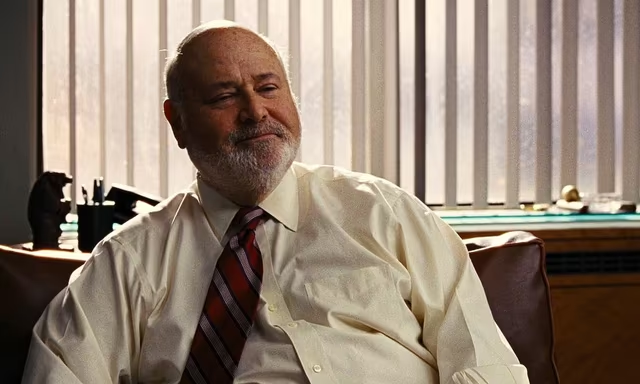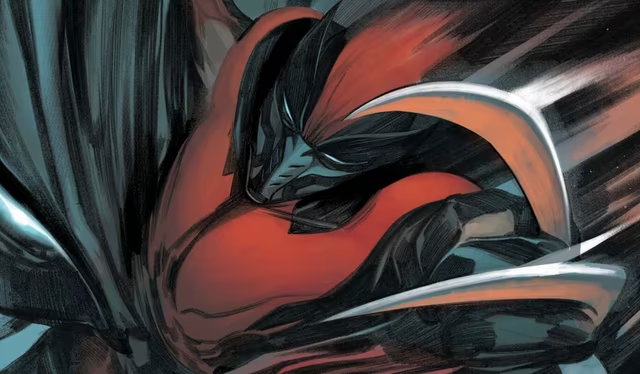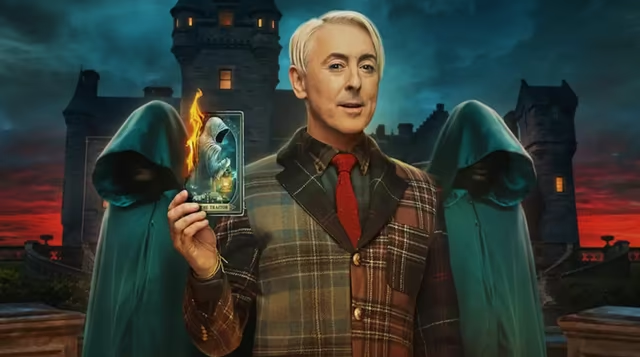If you click on a link and make a purchase we may receive a small commission. Read our editorial policy.
Power shift: How Batman: Fortress introduces a very different Dark Knight of Steel
Gary Whitta and Darick Robertson’s Batman: Fortress stands completed, with its heist on the Fortress of Solitude ending with a drastically altered balance of power.

Note: This article contains spoilers for Batman: Fortress
Across the eight issues of Batman: Fortress, Gary Whitta and Darick Robertson introduce readers to their own dark and violent vision of the DC Universe. While mirroring much of the current DCU, the story takes place outside of the main continuity, a fact underscored by its major character deaths and particularly its twist ending.
Faced with extraterrestrial invaders determined to eradicate life on Earth as long as Superman defends it, the Man of Steel and Batman come up with a surprising solution: A Kryptonian power transfer. Realizing that attempting to fight off the aliens would result in Earth being caught in the crossfire, Superman has no choice but to stand down, offering to sacrifice himself.
By using technology within the Fortress of Solitude, Superman not only willingly surrenders his powers for good, he secretly transfers them to Batman to so he can become Earth’s next mightiest hero. Now, Clark Kent is free to live his life and, with no Kryptonian defending the planet, humanity is safe while its new protector plans to change the world for the better.
The Dark Knight of Steel

Batman: Fortress revolves around the Dark Knight growing increasingly suspicious of Superman, fueled by Superman's abrupt disappearance after the invaders appeared. Assembling a ragtag team of allies, including Lex Luthor and the current Aqualad Jackson Hyde, Batman infiltrates the Fortress of Solitude after learning that the aliens are after a Kryptonian. Batman confronts Superman at the Fortress’ center only to learn that the alien invaders had secretly been tailing him the whole time, knowing the Dark Knight would lead them to their prey.
Charged with war crimes committed by the Krytonians prior to the destruction of Krypton, Superman agrees to submit himself for possible execution before an alien tribunal. However, Batman accompanies him, and, in an off-panel scene, successfully reaches a compromise with the tribunal. Superman is permitted to live, so long as he is permanently depowered, which is achieved through a molecular chamber within the Fortress of Solitude. Believing that the world always needs a Superman, Kal-El complies while transferring his power to Batman who modifies his costume and expands his crimefighting crusade from Gotham City to encompass the whole world.
The Strange Case of Batman: Fortress

Now standing complete, Batman: Fortress is an admittedly strange book, with its awkwardly placed sense of humor and choice of having Superman willingly go into hiding when Earth is under attack. Though the latter narrative choice is justified by Superman believing his open presence would lead to devastating collateral damage, it remains a dubious one for a superhero who can relocate to the other side of the solar system in seconds to draw away the aggressors from his adopted home rather than duck for cover and hope for the best. But the strengths in Fortress lie within its smaller moments rather than within its broad strokes, a distinction that comes into focus as the eponymous Fortress of Solitude enters the equation.
Batman: Fortress succeeds when taken on its merits as a heist adventure set within the DCU, with Batman assembling a crack team of experts to essentially break into the Fortress of Solitude and learn more about what’s going on. Batman’s dynamic with Lex is particularly fun, echoing their similar dynamic during Joshua Williamson’s all-too brief run on the main Batman ongoing comic book series, with Lex as the billionaire genius who knows exactly how to get under Bruce Wayne’s skin. The interplay between Batman and Lex carries the latter half of the series, with Lex’s constant conniving to save his own skin at the expense of those around him.
How a Super-Powered Batman Reimagines the Man of Steel

And then, of course, there’s the matter of Batman transforming into its continuity's Superman by the end of the story. This twist keeps in line with both characters on an abstract level – Clark Kent would give up his powers so long as he knows it saves lives and another Superman he can trust is willing to replace him. Batman is never one to reject superpowers, the Dark Knight has used untold fortunes and impossibly advanced technology to give himself an edge, and the opportunity to become Superman is one he would quietly relish as the ultimate tool to fulfill his vow of eliminating the evil that claimed his parents so many years ago.
But the concept of Batman as a Superman goes beyond just being able to shrug off gunfire and leap across Gotham’s tallest skyscrapers in a single bound. Whereas Superman purposely was a more reactive superhero to prevent himself from steering the course of humanity and unduly influencing it as an outsider, Batman remains fundamentally human in origin and outlook. The final panels of Batman: Fortress have the Caped Crusader showcasing his new powers by hovering over Earth, planning not to inspire humanity but lead it, eager at the chance to make a difference in a cruel world that always seemed to endure whatever Batman could throw at it.
Other Super Batmen

The idea of Batman having super powers is a trope that stretches as far back as the Silver Age, as the superhero genre leaned more into science fiction in mostly one-off stories that restored the status quo by a given issue’s end. This distinction has resurfaced in modern comics in temporary spurts or alternate universes, from Batman gaining the powers of Black Adam during the climactic battle of Dark Crisis on Infinite Earths to his using an experimental compound to stand toe-to-toe with an evil Superman in Injustice.
The trope subverts the concept that Batman is the most human member (or least powered) of the Justice League among a team of demigods. Given the powers and abilities to match his peers, the Caped Crusader can expand his mission in ways that he could only previously dream about, no longer constrained by his ordinary human limits.
Batman: Fortress opens with a Dark Knight completely outmatched by a threat from beyond the stars, left with only his wits. By the end of the story, Batman is now the most powerful figure in that universe and is not planning to hole up in his own fortress any time soon but become the ceaselessly proactive force for good he always intended to be.
Written by Gary Whitta, illustrated by Darick Robertson, colored by Diego Rodriguez, and lettered by Simon Bowland, all the individual issues of Batman: Fortress are on sale now from DC Comics. A hardcover collection of the entire miniseries is slated to go on sale June 6.
With Walking Dead: Clementine Book One on-sale now, Book Two now has a release date of October 2023
Follow Popverse for upcoming event coverage and news
Find out how we conduct our review by reading our review policy
Let Popverse be your tour guide through the wilderness of pop culture
Sign in and let us help you find your new favorite thing.
















Comments
Want to join the discussion? Please activate your account first.
Visit Reedpop ID if you need to resend the confirmation email.